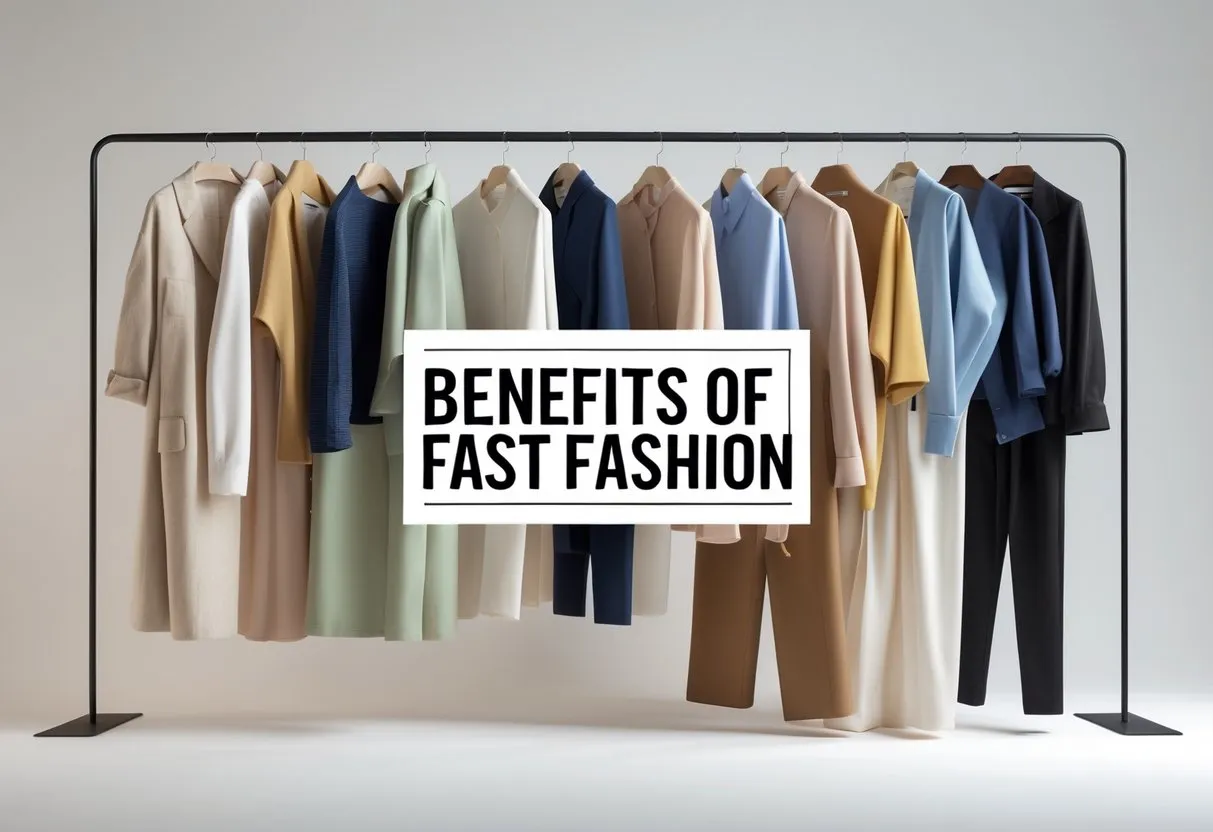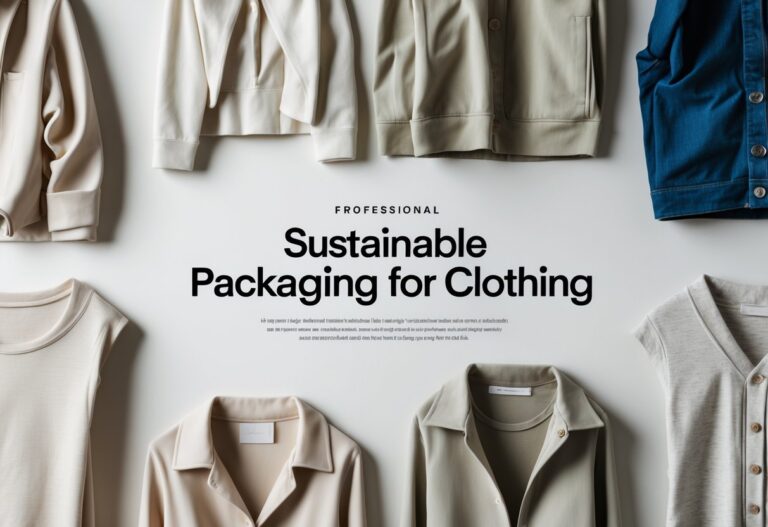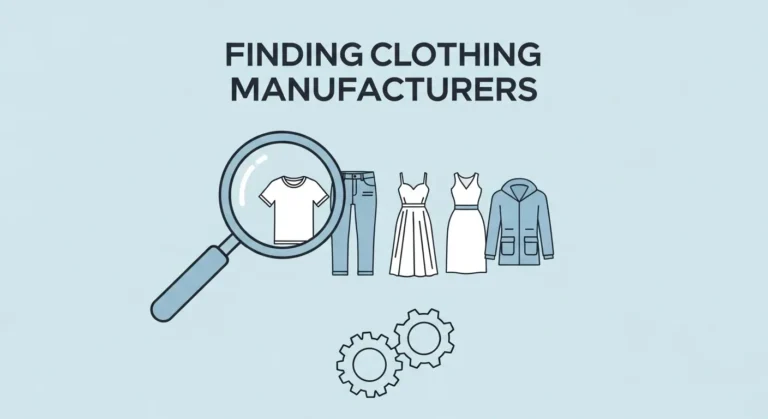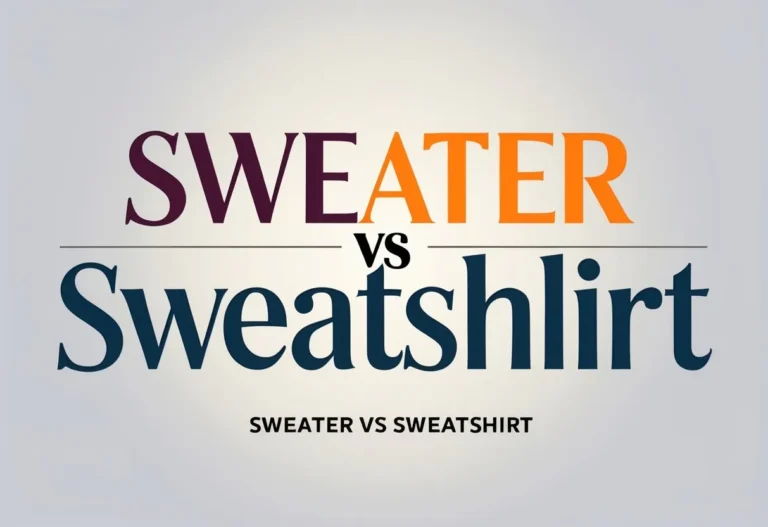The Benefits of Fast Fashion: A Deep Dive into Modern Style
Fast fashion plays a significant role in making stylish clothing affordable and accessible to a wide range of people. It quickly delivers the latest trends at prices that fit many budgets, allowing more consumers to wear fashionable items without spending a lot. This helps break down barriers to style that once made trendy clothing exclusive to luxury shoppers. So here you will get about benefits of fast fashion in detail.

Beyond affordability, fast fashion supports economic growth by creating jobs around the world, especially in developing countries. The fast production process and wide variety of choices meet consumer demand efficiently, fueling both the fashion industry and local economies. Its ability to adapt swiftly to changing styles also keeps the market fresh and relevant for shoppers everywhere.
Key Takeways
- Fast fashion offers affordable access to current styles for many consumers.
- It supports job creation and economic activity on a global scale.
- The industry adapts quickly to trends, keeping the market responsive and diverse.
Affordable Access to the Latest Trends

Fast fashion makes it easier and cheaper for many people to buy new clothing. It brings the newest styles to stores quickly, meeting the high demand from consumers who want to stay up to date. These changes affect how fashion is bought, worn, and understood worldwide.
Economic Accessibility for Consumers
Fast fashion offers clothing at lower prices, making trendy items affordable for many people. Brands like Zara and others produce styles quickly and sell them at prices that fit average budgets. This affordability allows consumers to buy more frequently without spending too much.
Because fast fashion cuts costs through large-scale production and simple materials, it lowers the price of clothing. Many consumers appreciate this because they can refresh their wardrobes often. This model responds strongly to consumer demand for budget-friendly and stylish clothes.
Availability of Trendy Styles
Fast fashion brands update their collections regularly, sometimes weekly, to keep up with new fashion trends. This quick turnaround helps consumers access what is popular almost immediately, unlike traditional fashion cycles that work seasonally.
Stores can reflect popular styles from runways or social media influencers within weeks. This speedy release of new designs ensures shoppers always have trendy options. It also encourages people to experiment with their style by choosing from a wide range of affordable, current pieces.
Democratization of Fashion Choices
Fast fashion lets more people wear styles that were once limited to high-end fashion. By producing runway-inspired designs at lower prices, it opens up fashion options to a broader group beyond luxury buyers.
This access allows individuals to express themselves through clothing without needing a large budget. It breaks down barriers between fashion classes, making the latest trends available to different ages, incomes, and locations through physical stores and online shopping platforms.
Economic Growth and Job Creation

Fast fashion has a notable impact on the economy by increasing production, sales, and employment. It supports many sectors, from manufacturing to retail, and reaches global markets. These activities contribute to broad economic growth while creating numerous job opportunities.
Boosting Global Economic Activity
Fast fashion drives economic growth by increasing consumer spending and expanding market reach. The industry’s rapid production cycles and frequent new collections encourage continuous purchases. This high turnover supports steady revenue streams for brands and businesses involved in the supply chain.
Globalization helps fast fashion brands access diverse markets, adapting styles for different regions. This expansion promotes cross-border trade and investment. As fast fashion revenues grow, they contribute significantly to the GDP in various countries.
The close link between fast fashion and global supply chains strengthens economic connections worldwide. Efficient production and distribution support broader economic integration and growth across numerous industries beyond clothing.
Opportunities in Developing Countries
Manufacturing jobs in developing countries are a key benefit of fast fashion. Brands often set up factories in low-cost regions, increasing employment in areas that may have few other options. These jobs are usually entry-level and do not require advanced skills.
While wages may be low, these manufacturing roles provide many workers with a steady income. This employment supports local economies and contributes to poverty reduction in some regions. Economies reliant on garment production benefit from the fast fashion model to sustain growth.
However, challenges such as job security and working conditions remain concerns. Still, the overall increase in employment opportunities in developing countries highlights fast fashion’s role in global job creation.
Stimulating Retail and Logistics Sectors
Fast fashion boosts employment in retail by creating numerous roles in stores and online platforms. Jobs range from sales associates to supply chain management, offering flexible options like part-time or seasonal work. This flexibility suits students and individuals with other commitments.
Logistics and distribution also grow due to fast fashion’s need to move products quickly. Warehousing, shipping, and inventory management roles expand as brands maintain fast turnover. Efficient logistics support timely delivery of new collections, keeping the business competitive.
Together, retail and logistics sectors form an essential backbone for the fast fashion industry’s economic contributions. They provide jobs, support consumer demand, and ensure smooth supply chain operations.
Efficient Supply Chains and Rapid Production
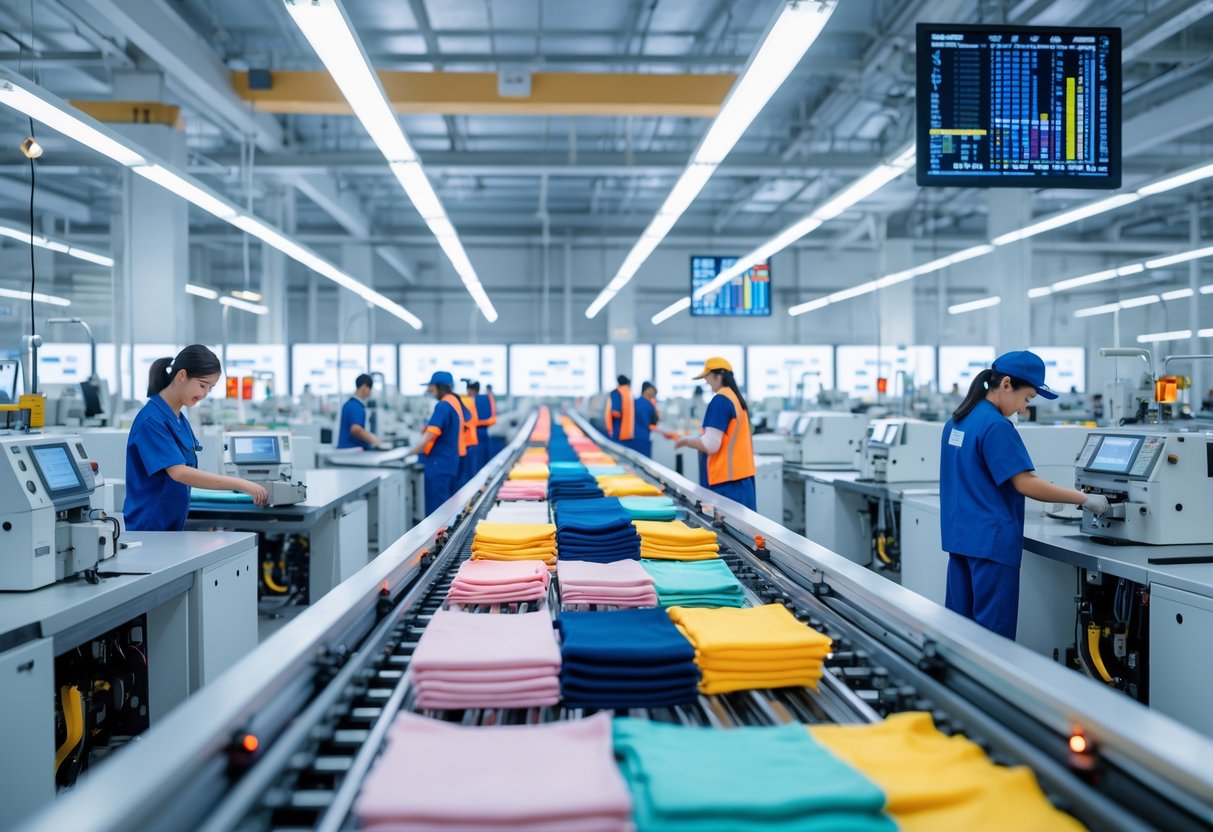
Fast fashion companies rely on tightly connected processes to produce clothing quickly and meet changing consumer demands. Their systems focus on speed, flexibility, and cost control, which drives the entire business model.
Agile Manufacturing Processes
Agile manufacturing allows fast fashion brands to design, produce, and deliver new styles faster than traditional methods. These processes include short production cycles and flexible workflows that can adapt to sudden trend shifts.
Companies use automated machines and assembly lines to reduce manual labor and speed up tasks like cutting, sewing, and finishing garments. This approach minimizes delays and lowers costs while maintaining consistent output.
Zara is a notable example, using an agile model with frequent, small-batch production runs to avoid overstock. It monitors sales closely and adjusts manufacturing in near real-time to keep inventory lean and relevant.
Outsourcing and Global Networks
Fast fashion brands often outsource parts of their manufacturing to countries with lower labor costs. This global network includes suppliers, subcontractors, and logistics partners that help scale production rapidly.
Outsourcing enables access to a wide range of materials and factories, allowing brands to create diverse collections without heavy upfront investment. It also helps companies shift production locations to optimize costs and speed.
Efficient logistics and supply chain coordination are critical in these networks. Partners must work closely to move materials and finished products quickly, ensuring fresh styles reach stores or customers on tight schedules.
Consumer Empowerment and Personal Expression

Fast fashion gives consumers the ability to try new styles without high costs or long waits. It shapes how people choose clothes and show who they are. This access influences both individual identity and broader cultural connections through trends.
Experimentation with Fashion
Fast fashion allows consumers to buy trendy clothes quickly and affordably. This makes it easier for people to test different looks, styles, and combinations without worrying about spending too much money.
People can change their wardrobe often to match new tastes or trends. This flexibility supports personal expression by letting individuals explore varied identities through clothing. It lowers barriers so more people can participate in fashion.
Retailers respond fast to consumer behavior, creating designs inspired by current trends. This quick turnaround helps shoppers stay connected to what’s popular. It also encourages experimentation, as customers feel less risk in trying bold or new styles.
Fostering Cultural Exchange
Fast fashion promotes cultural exchange by spreading international styles to many regions. Consumers access fashion from different countries at affordable prices, increasing exposure to diverse cultural symbols and trends.
This exchange lets people incorporate global influences into their clothing choices. It broadens what fashion means and how people express themselves.
Brands often mix elements from various cultures, which leads to hybrid styles that reflect global consumer tastes. This dynamism in fashion trends grows from the interaction between cultures and consumer demand worldwide.
Innovation and Market Responsiveness

Fast fashion companies focus on quickly adjusting to changing consumer tastes while offering a wide range of choices. This allows them to keep their products fresh and appealing in a fast-moving market. Efficient production and flexible strategies help these businesses stay competitive and meet diverse customer needs.
Customization and Variety
Fast fashion offers a large variety of styles, colors, and designs. This variety helps retailers target different groups and seasons without delay. Brands often update their collections to match current fashion trends inspired by celebrities or runway shows.
Customization also plays a key role. Some fast fashion retailers adjust clothing designs to suit specific markets or consumer preferences. This flexibility allows businesses to build customer loyalty by meeting unique demands. It also opens opportunities for partnerships that create exclusive collections, giving retailers an edge in a crowded market.
Driving Industry Adaptation
Fast fashion’s ability to react quickly to new trends pushes the entire fashion industry to adapt faster. Traditional fashion cycles that last months are shortened to just weeks. This speed helps companies meet consumer demand for the latest looks almost immediately.
Efficient supply chains and new technologies support this rapid response. Fast fashion brands use data from social media and sales to decide which products to create next. This real-time approach helps retailers avoid overstock while keeping shelves filled with fresh items. Overall, fast fashion drives innovation by setting high standards for speed and market awareness.
Sustainable Initiatives and Environmental Efforts

Fast fashion companies have started adopting more sustainable methods to address their environmental footprint. These efforts focus on using better materials, improving production processes, and minimizing waste. Many brands also implement recycling programs and support circular economy models to reduce their impact on the planet.
Adoption of Sustainable Practices
Some fast fashion brands now use organic cotton, recycled polyester, and sustainable fabrics like Tencel. These materials require less water and energy to produce compared to traditional options. Brands also work on improving supply chain transparency to ensure fair labor and ethical sourcing.
Many companies run clothing take-back programs where customers return old garments for recycling or upcycling. This helps reduce textile waste and extends the life of materials. Additionally, some brands focus on reducing water use and chemical pollution in their dyeing and finishing processes.
Reducing Environmental Impact
Fast fashion brands aim to cut down on waste that goes to landfills by encouraging recycling and secondhand sales. Some efforts involve investing in circular economy systems, where clothes are designed to be reused or remade.
Environmental programs have led to a reduction in water consumption by up to 20% in certain production lines. These changes help decrease the industry’s large share of global carbon emissions. However, only widespread adoption of these initiatives will significantly lower the overall environmental impact.
Frequently Asked Questions
How does fast fashion contribute to economic growth?
Fast fashion creates millions of jobs around the world. It supports not only manufacturing but also retail, marketing, and logistics sectors. This broad network helps boost local economies, especially in developing countries where factories and suppliers are located.
What are the positive impacts of fast fashion on employment opportunities?
Fast fashion provides stable jobs for factory workers and retail staff. It also offers chances for young designers to showcase their work and gain experience. The industry supports many small businesses, like local tailors and fabric suppliers, which helps communities grow financially.
In what ways does fast fashion offer affordable clothing options to consumers?
By producing clothing in large quantities and reducing manufacturing costs, fast fashion brands sell trendy clothes at low prices. This allows people from various income levels to buy fashionable items without spending too much. Consumers can update their wardrobes often without financial strain.
What are the benefits of fast fashion to the global supply chain?
Fast fashion uses advanced logistics and technology to deliver new styles quickly. These efficient systems connect designers, manufacturers, and stores worldwide. This global reach ensures that similar fashion trends appear simultaneously in many countries.
How does fast fashion respond to the changing trends demanded by younger generations?
Fast fashion responds to trends within weeks or even days by copying popular styles from high-end fashion shows and social media. It uses market research to track what is popular among younger buyers, providing fresh collections regularly for them to choose from.
What advancements in production efficiency are associated with fast fashion?
Fast fashion incorporates technologies like automated cutting, waterless dyeing, and recycled materials to speed up production. These methods reduce waste and energy use. The industry invests in warehouses and transportation to maintain fast delivery times while managing costs.

